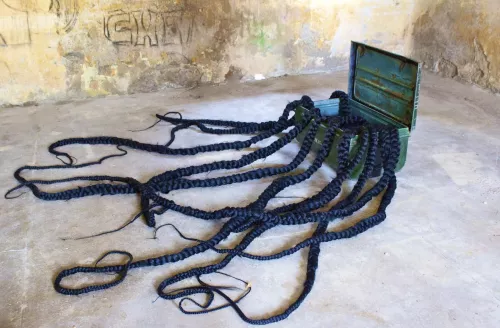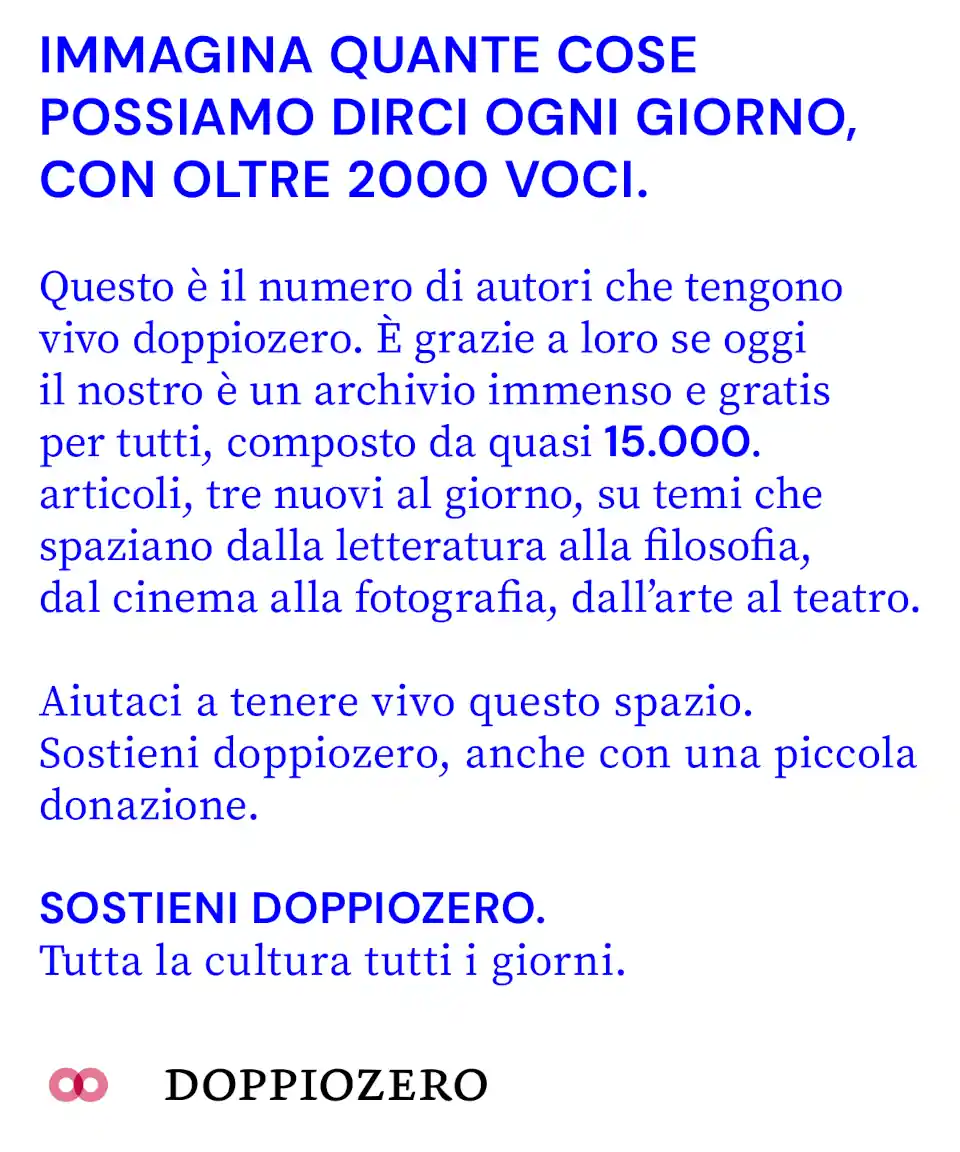
Speciale
Palazzo Lucarini Contemporary, Trevi, Italy (March 4 – April 25) / Plural Biography. Virginia Ryan 2000–2016
If the world was not created to end up in an exhibition, we can turn to an exhibition to understand more about the world: it is not about looking at art, but looking through art.
This was the aim of a curatorial project presented at Palazzo Lucarini, focusing on the works by Virginia Ryan, an artist who spent the years from 2000 to 2015 between Ghana and Ivory Coast. Fifteen years are a considerable amount of time in a person’s life. Virginia Ryan is neither a globetrotting artist focusing on short-lived site-specific projects, nor an artist rooted in one single place. She describes herself as a “reluctant nomad.”
An Australian of Irish descent, she spent part of her life in Scotland, got married in Italy and moved with her ambassador husband to Egypt, Yugoslavia and Brazil, and then to Ghana and Ivory Coast. Her life is a never-ending journey, a life spent in travel.
Her singular but not single-faceted existence can be regarded as a cultural biography that symbolically evokes and reflects the diasporic nature of our present lives. It is a plural biography, one and multiple at the same time, intersecting the lives of others.
Her art derives from an existential search, which allows her to escape decorative formalism and conceptual abstraction. It is a way to bring order into her life, to keep it together and move on, with no feeling of longing for the past. Her artistic view of the world enables her to orientate, draw maps, and make sense of reality. Her art can therefore be seen as a visual diary that collects evidence of her passage. It shapes her existence, acting as an anchor to a nomadic life that constantly forces her to move on and start over.
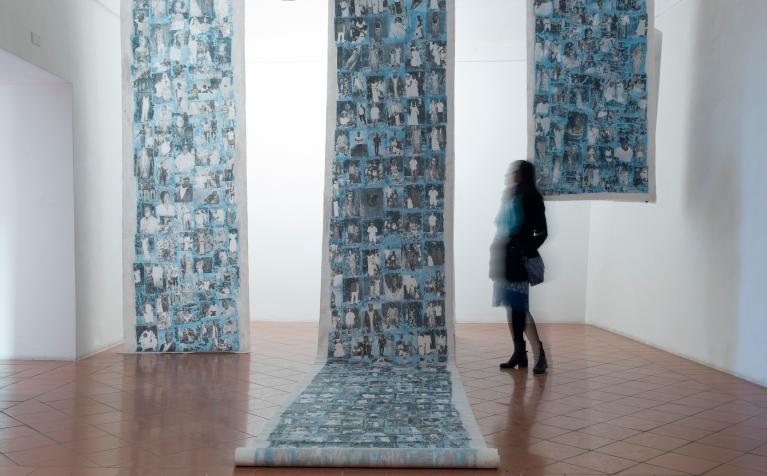
Ph: Virginia Ryan, Installation view, Palazzo Lucarini 2017, courtesy of the artist.
Her penchant for assemblage and photomontage, for found objects, for perishable and recycled materials, opens up a dialogue with the history of art, but arises from a personal need, from her experiences in Africa. Faced with the wounds and transience of life, with the passing of time that encompasses and erases everything, Virginia Ryan gives life to meticulous assemblages of materials, patchworks where stitch marks are not concealed: an art of memory that alters its object by ripping or erasing it.
This is clearly shown by the titles of her works of art, such as Landing to Accra (2002), Exposures (2001-2005), Castaway (2003-2008), and Topographies of the Dark (2007-2008), all inspired by a sense of uncertainty and displacement that she felt in facing cultural diversity and social inequality, running the risk of losing her own identity while being determined to rediscover herself, to move the line between “familiar” and “alien” a little bit further.
In her bricolage works, she brings together multiple layers of sense, highlighting points of contact and contrast between different forms of life. So it happens that the ocean motif, which appears in most of her works, simultaneously reminds us of the relaxing beach holidays of Westerners and local middle classes, the issues of human trafficking and oil pollution, and the world of the dead evoked by the people from the Gulf of Guinea.
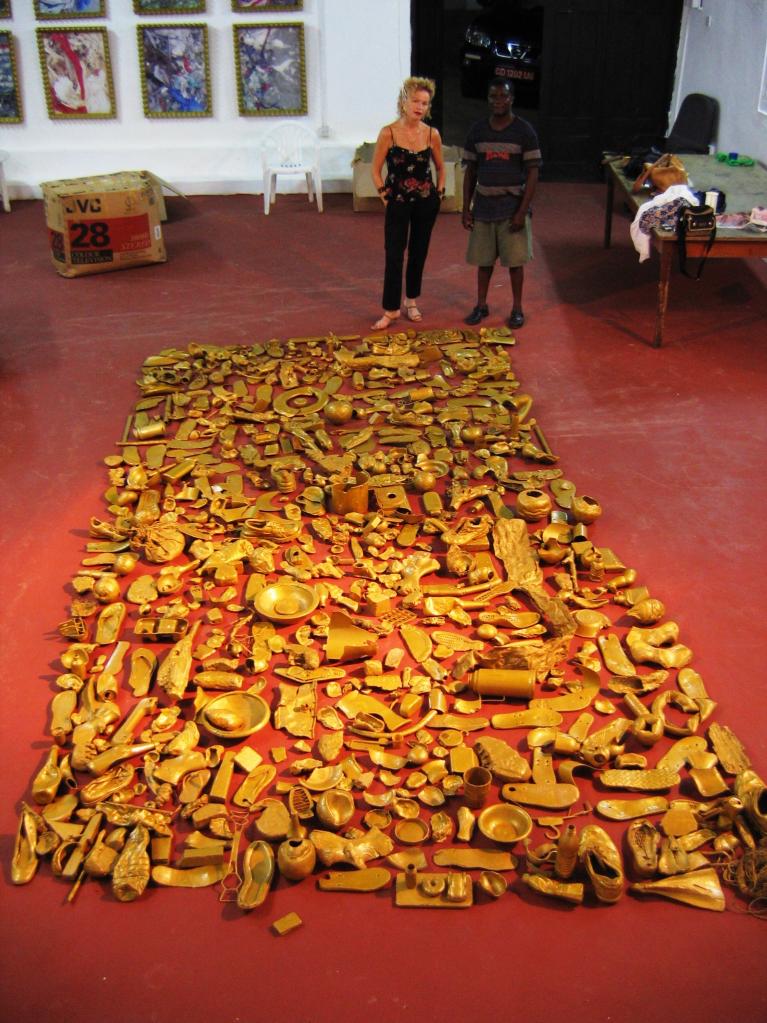
Ph: Virginia Ryan, Goldfield, Kumasi 2002, courtesy of the artist.
Virginia Ryan’s experience of Africa does not come from the fringes, but from the elitist world of Western expatriates. However, she does not confine herself to it, but presents herself openly, with no disguises, reflecting on her own identity and focusing on the social relations that shape her own perceptions. She tries to free herself from the identities assigned to her, moving from one to another so as to have more room for action. She brings out her Australian origins to escape her role as the Italian ambassador’s wife; goes back to her Irish descent to support colonized peoples; and asserts her feminist identity in a male-dominated world.
In this regard, Exposures: A White Woman in West Africa is a very significant work. Photographed by friends, workers, and passers-by, Virginia is portrayed in her everyday activities in Accra. We see her getting her hair done and having a massage, entertaining guests at parties and events, participating in a TV show, shopping at a supermarket, or in hospital with malaria. “Is that everybody’s dream of Africa?” – she writes in the catalogue – but this is actually the life of many Westerners in Africa.
In the pictures, she looks like a royal beauty, always smiling and well dressed: a blond white woman surrounded by black people. In this semi-ethnographic account of “white tribes”, what appears as everyday life is actually presented in a different light, one that highlights colour, producing a disturbing effect on the viewer.
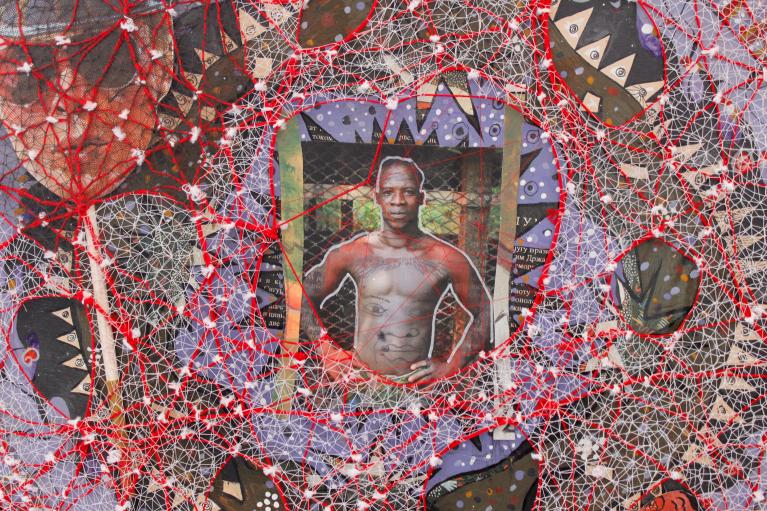
Ph: Virginia Ryan, Detail, 'I Will Shield You' series 2016, courtesy of the artist.
What is most upsetting in these photographs is the portrayal of the exclusion mechanisms inherent in our ordinary lives, the presence of our colonial heritage in the everyday relationships between white and black people. Virginia’s image becomes a disruptive element because in these pictures white people lose the “privilege of invisibility,” as anthropologist Steven Feld describes it; a privilege that is only granted to those in hegemonic positions, for whom skin colour is not an issue.
Overexposed to the black people’s gaze, Virginia experiences her own vulnerability: “I have been told that the Ghanaian twin word for whites, obroni, actually means not pale-skin, but ‘without skin’ – or at least that this is one of the possible meanings. It shocked me when I heard that. Can that be true? Is that how I look? Like some sort of skinned, peeled, ghost-like apparition, whilst they look so round and succulent?” What emerges here is not so much the representation of racial discrimination as the act of resistance performed by an independent mind.
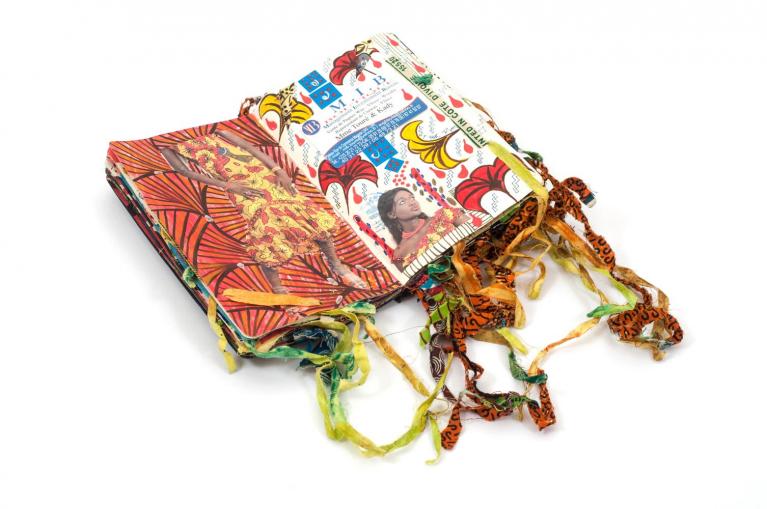
Ph: Virginia Ryan, The Rue Du Commerce, 2013, courtesy of lettera27 art collection.
Virginia Ryan’s gaze, like our own, is not free from ethnocentric assumptions, but does not indulges inthe exotic stereotypes she inherited from her culture. In her works, she captures a contemporary, post-nostalgic, urban Africa, where exoticism is only present in the form of irony. The fact that she is a woman also plays a relevant role.It is actually in a Western male imagery that Africa isseen with lustful eyes, as a virgin land to be discovered and conquered.
Virginia Ryan is far from this rhetoric of discovery and conquest, as if nobody had never been to Africa before, or Africans had not already produced their forms of knowledge and self-representation. Her creations are a‘re-mediation’ of cultural artefacts through which local reality is experienced: works of art, media, advertising, and mass culture. Her access to reality is filtered by images produced or disseminated locally; her artistic work is embedded in cultural forms created by others. The result is a series of collage works based on old posters from a film theatre in Grand Bassam, Ivory Coast (L’Histoire Sans Fin, 2014); long rolls of cloth with printed portraits taken from Ivorian photo archives due for destruction (….); sculptural paintings created by assembling objects found by the seaside, material remains of past lives (Castaway, 2003-2008); or painted pictures of large advertising billboards populating the streets of Abidjan (Selling Dreams, 2012-2014).
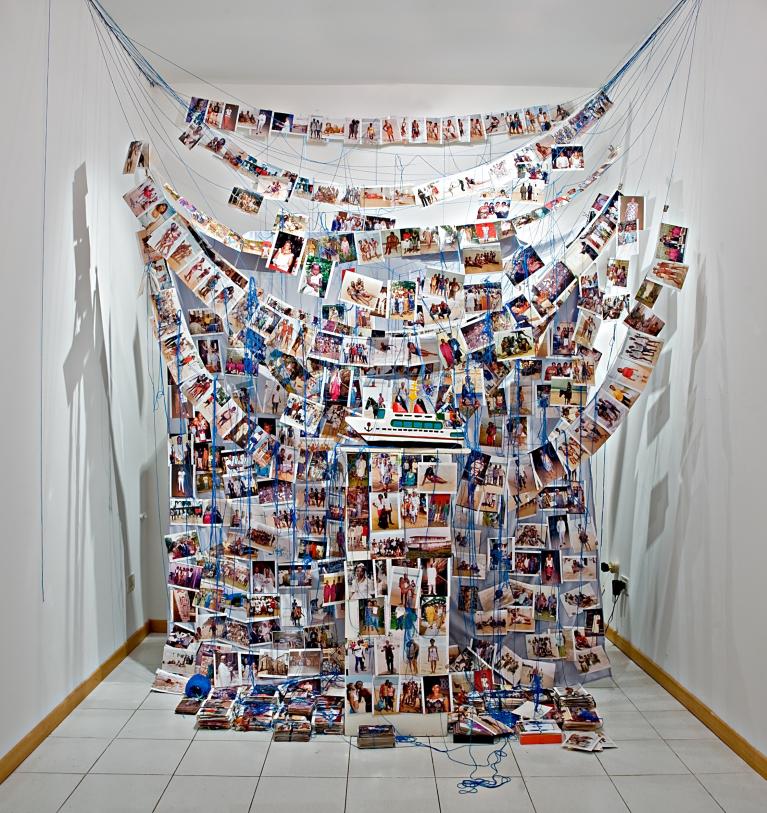
Ph: Virginia Ryan, Found photographs from Grand Bassam, installation Spoleto, courtesy of the artist.
Her “intermedia” art comes from the objects and images that weave the fabric of reality. Here, the line between reality and imagination, between what is ours and another’s, between individual and collective, becomes blurry but is still visible. While this artistic re-mediation process weakens the relation with the starting context, it does not erase the communicative intention of the original artefact. So it happens that Virginia Ryan’s works make us feel not only observers but also observed, enabling us to look at art but also through art.
Translation by Laura Giacalone.
With the support of 
